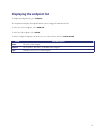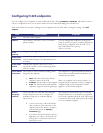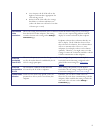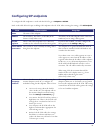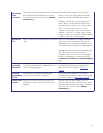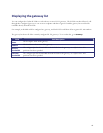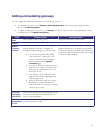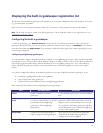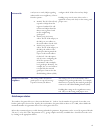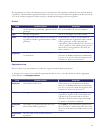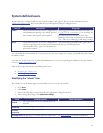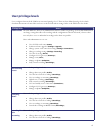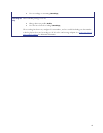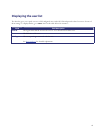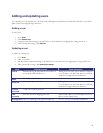
63
unknown IDs
send (or not to send) LRQs regarding
unknown IDs to its neighbor(s). Choose
from the options:
• Disabled: The IP VCR will only
respond to LRQs about IDs
registered with itself. It will
not forward LRQs about IDs
that are not registered with
itself to neighboring
gatekeepers.
• Enabled, using local return
address: The IP VCR will put, in
the LRQ, its own address as
the return address for the LCF.
• Enabled, using received return
address: The IP VCR will put, in
the LRQ, the address of the
gatekeeper that originated the
request as the return address
for the LCF. Use this option
only if you are configuring the
IP VCR to operate in an
environment with a multiple-
level gatekeeper hierarchy. For
example, the 'received address'
is required by the national
gatekeepers connected to the
Global Dialing Scheme (GDS).
configure the IP VCR to forward any LRQs.
Enabling using received return address can be a
significant security risk. Only use this setting with
proper cause.
Accept LCFs from non-
neighbors
This setting enables the built-in
gatekeeper to accept LCF message
responses from any IP address.
This setting is for use in environments with a
multiple-level gatekeeper hierarchy. For example,
this feature is required by the national gatekeepers
connected to the Global Dialing Scheme (GDS).
Enabling this setting can be a significant security
risk. Only use this setting with proper cause.
Gatekeeper status
The number of registered devices is shown in the format X / Y where Y is the number of registered devices that your
built-in gatekeeper is licensed for. Equally, the total number of registered IDs is shown as Z / 1000, where 1000 is the
maximum number of registrations allowed over all registered devices.
Below these summary figures is a table showing individual registrations. Registrations can be viewed by registered ID (the
"ID view") or by device (the "Registration view"), giving complete and easily searchable lists. Switch between the views
by clicking on the appropriate button.



